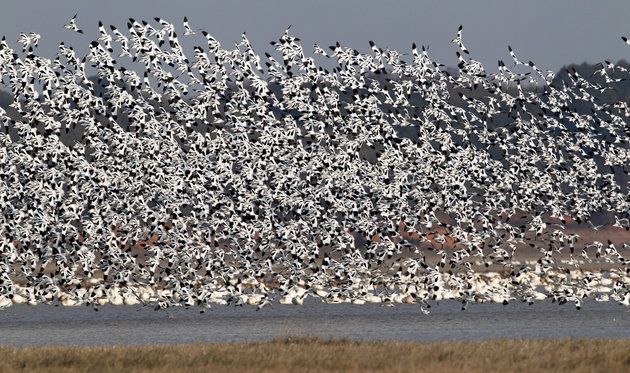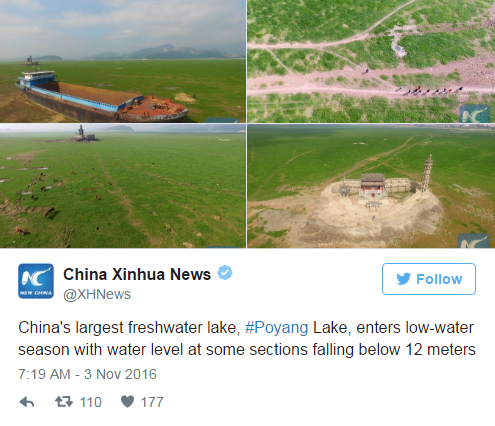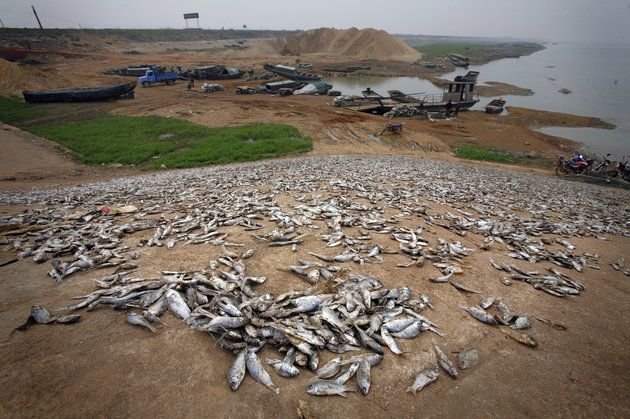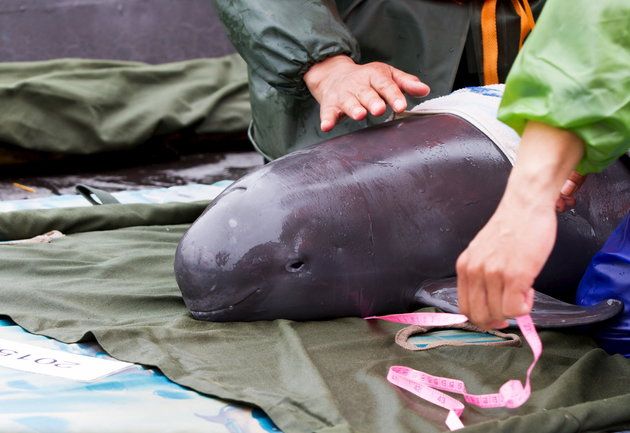Saving China's Largest Freshwater Lake
Published on by Water Network Research, Official research team of The Water Network in Social
Poyang, China’s largest freshwater lake is under serious threat, and it seems no one can agree on how to save it.

VCG/VCG VIA GETTY IMAGES;Half a million migratory birds, including the critically endangered Siberian crane, are said to flock to China’s Poyang Lake every year.
Poyang Lake can swell to over 1,700 square miles, an area larger than Rhode Island. But photographs released by China’s state-run Xinhua News Agency in November show it completely dry in parts, desiccated by drought.
The website EcoWatch describes tourists walking “on large portions” of the parched lake, located in Jiangxi province. Photos show ships stranded on the exposed lakebed, while cattle graze on what is usually the lake floor.

Poyang is connected to the Yangtze River and is home to several critically endangered species, including the Yangtze finless porpoise.
The lake has been shrinking for years. Since 2003, Poyang’s dry period has been starting earlier and lasting longer, according to a 2015 study by researchers at the East China Normal University in Shanghai. This year, the dry season began more than 50 days earlier than usual.
Climate change, industrial activities like sand mining and the construction of the enormous Three Gorges Dam, which opened in 2003 and spans the Yangtze River, are all possible culprits for the lake’s decline.
Local authorities are now scrambling to save Poyang. But not everyone is thrilled with their plan.
In 2008, the Jiangxi provincial government first proposed building a 10,000-foot sluice gate ― in effect, a dam that would be constructed across the channel that links Poyang to the Yangtze ― to keep more water in the lake during the dry season. According to a report published by local officials last month, the gate could help raise water levels, improve water quality and promote shipping on the lake, among other benefits.

NIR ELIAS/REUTERS Dead fish on the banks of drought-affected Poyang Lake in 2008. One lifelong fisherman told The Guardian in 2012 that he had not been out on the lake in over a year and had never seen it so dry.
China’s Ministry of Environmental Protection recently began an environmental risk assessment of the plan, The New York Times reported last week. If senior officials do not reject the proposal for the gate, construction should start once the review is concluded.

REUTERS/STRINGER; A rescue worker measures a recovered finless porpoise before releasing it back to the wild in Poyang Lake on March 26, 2015. Oceanography and fisheries experts said the finless porpoise is endangered due to pollution and water shortages, among other threats.
Environmentalists, however, are rushing to put the brakes on the project, saying the gate could trigger “irreversible” ecological damage.
“I think they’re proposing a solution without understanding the causes of the problem,” David Shankman, a professor at the University of Alabama who has studied Poyang Lake, told the Times. “The whole idea of the dam is that there would be some economic benefit, but there may be potential long-term ecological problems.”
For one, further cutting off Poyang’s connection with the Yangtze could cause drought conditions to worsen.
“Rivers and lakes depend on each other,” environmental activist Wang Yongchen told Guangzhou Daily in 2012. “The Three Gorges Dam has already kept water from the Yangtze and the lake, and the new Poyang Lake dam would further obstruct the natural connection.”
Scientists say the project could also “irreparably” change the lake’s seasonal flood pulse and cause abnormally high water levels during the dry season. This could submerge the lake’s wetlands, which provide a critical habitat for birds.
Half a million migratory birds flock to Poyang Lake every year, including the critically endangered Siberian crane. About 3,000 of the birds remain on Earth, according to the International Crane Foundation.
Read full story : Huffington Post
Media
Taxonomy
- River Studies
- Drought
- Lake Management
- Water Management
- Environmental
- Environmental Impact